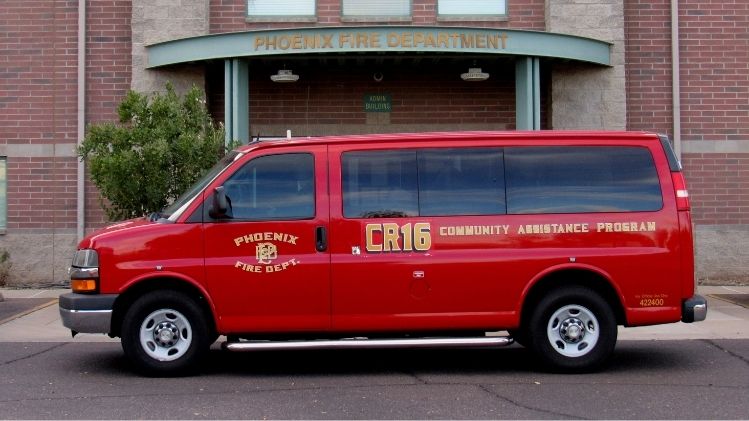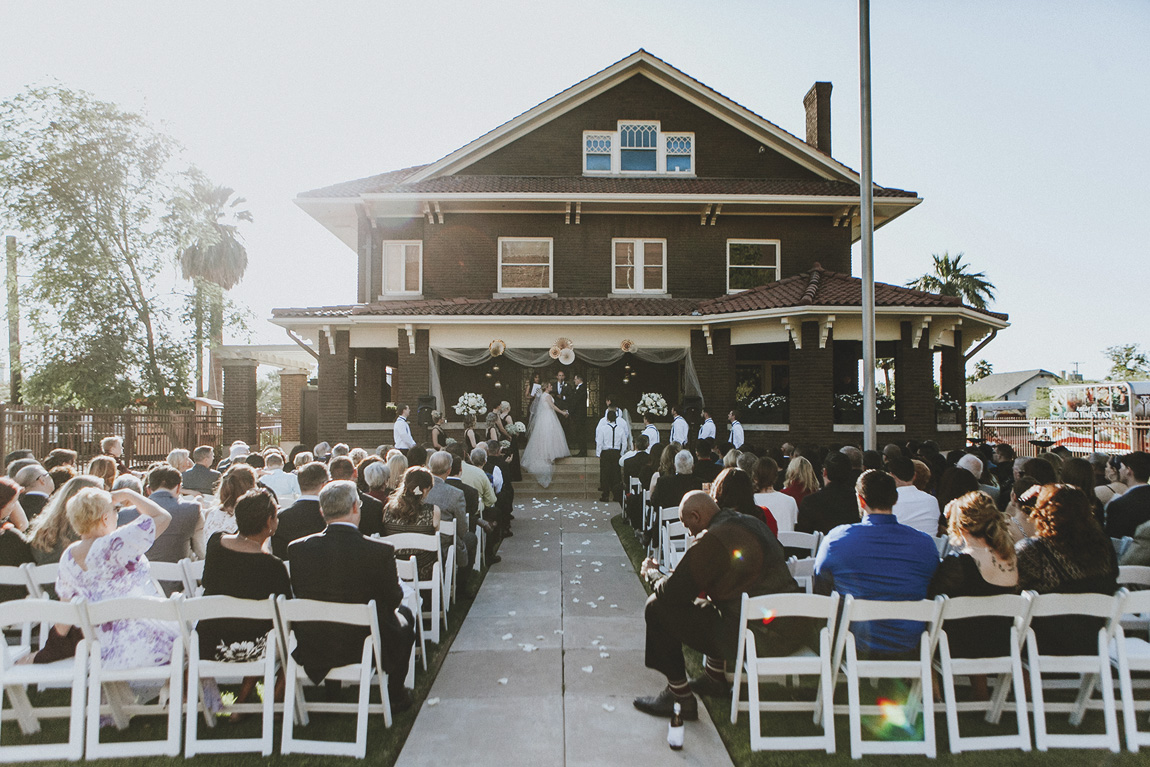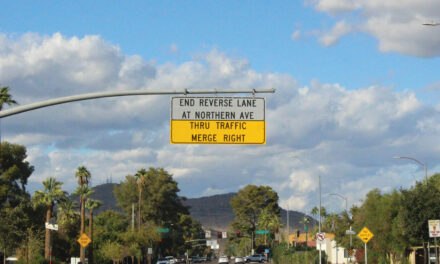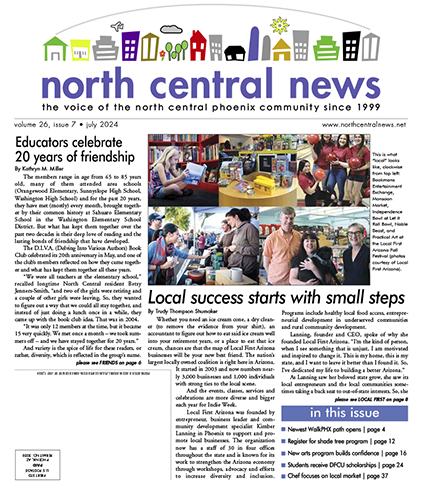[btn]By Teri Carnicelli[/btn]
Some say it will bring needed revitalization to a half-empty commercial center that now houses a “massage” and tanning parlor. Others say it will bring in more criminal elements to an already struggling area.
The decision about whether to allow a medical marijuana dispensary clinic at 24 W. Camelback Road rested in the hands of one of the city’s zoning administrators in a hearing held on March 28, after this publication went to press. For results of the hearing, visit www.northcentralnews.net and click on “News Updates.”
The owners of Urban Greenhouse Dispensary were seeking two variances and a use permit to open the business. The variances are needed because the proposed location is within 20 feet of a residential neighborhood, instead of the 250 feet minimum required by city zoning code, and within 1,300 feet of a school—Brophy College Prep—where a minimum of 1,320 feet is required. The use permit is for the dispensary itself.
Brett Carr, William Gibbs and Jeff Cooper, partners with Urban Greenhouse Dispensary, held an open house on March 6 at the strip center and said they had previously held discussions with representatives of all four adjacent historic districts, including Pierson Place, Medlock Place, Windsor and St. Francis. For the most part, the response had been positive, Carr said at the open house.
He explained that the people he had spoken with were encouraged to learn that the dispensary would have greatly increased security than an average business, include a 24-hour security guard and cameras inside and outside of the dispensary. Some residents, such as Noelle Baker of the Medlock Place neighborhood, thought the extra security would actually help eliminate some of the crime issues the center and the adjacent neighborhoods are currently experiencing. She also was impressed that each partner involved in the dispensary had a solid business background and at least two were family men.
“Most of the current dispensary owners in Arizona are like us–business owners, entrepreneurs, and just pretty solid citizens,” Cooper pointed out. He has a background in aerial photography and map-making. Carr used to be in the bar and restaurant business, and Gibbs was a certified public accountant (CPA).
“There are some advantages to having these people (open the dispensary),” Baker said. “They seem very respectable, and their extra security is impressive. If they have to be located somewhere in the Alhambra Village area, I suppose this is one of the better locations.”
Others at the open house were pleased to learn that, should the dispensary open at that location, all the sign-spinners touting “marijuana doctors” in the area would have to go away as, by law, those so-called “compassion clubs” would have to shut down. Carr said there are more than 60 of these medical marijuana co-ops operating in the city right now. According to state law, these compassion clubs must shut down if a licensed dispensary is located within 25 miles of their area.
However, some residents felt the potential negatives far outweighed the “positives” of the dispensary opening.
The board officers of the Medlock Place Neighborhood Association drafted a letter in opposition to the variances and use permit, citing concerns about drops in residential and commercial property values. “We believe this type of business will have a significant impact on the character and quality of our neighborhood and downgrade one of the premier commercial locations in the city of Phoenix,” the letter read in part.
In addition, board members were worried about the “bad element” such a business would attract to the area. Currently there are more than 35,000 medical marijuana cardholders in the state of Arizona but only a handful of dispensaries have been opened statewide.
“[We] are concerned that students and residents would interact with marijuana users who will be accessing surrounding businesses, parking lots, riding light rail and busses to and from this dispensary,” the letter stated.
It was partly the location’s proximity to the nearby Central and Camelback light rail station that attracted Urban Greenhouse’s owners to the retail center. Carr pointed out that people with medical issues such as glaucoma or severe nausea often are unable to drive a car and need to use alternative modes of transportation, like the bus and light rail.
He also emphasized that state law prohibits customers from lighting up in the dispensary, in the parking lot, or anywhere other than the privacy of their own homes.
It was certain to be a precedent-setting case for the city’s zoning administrator, who could either open the door to the North Central community’s first medical marijuana dispensary, or leave thousands of medical marijuana cardholders still waiting for a clinic to come to their area.










































